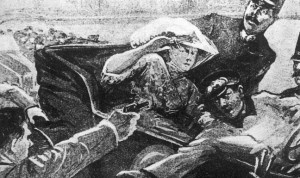 Originally published 12/16/2009
Originally published 12/16/2009
In the Pine Barrens episode from the third season of The Sopranos, Paulie & Christopher think they have killed a Russian mobster and travel to the Pine Barrens of New Jersey to dispose of the body. After arriving, they open the trunk to find him still alive. Ultimately the Russian escapes while Paulie & Christopher become hopelessly lost in the woods. Paulie calls Tony to report what has happened: Continue reading


